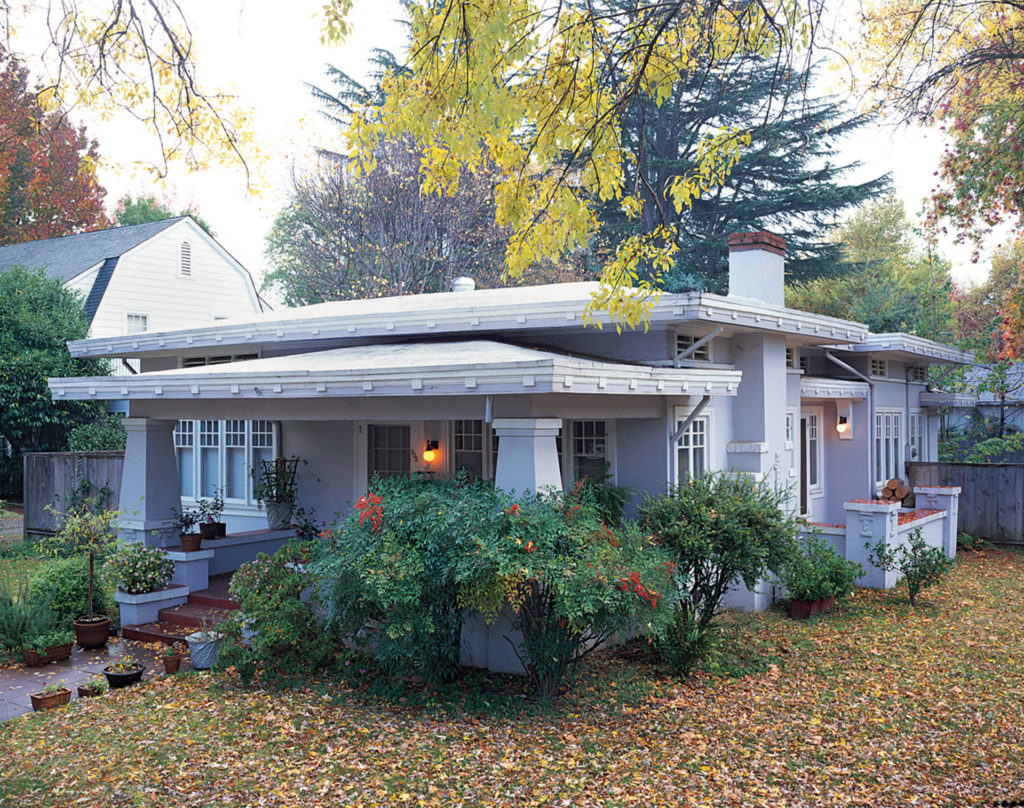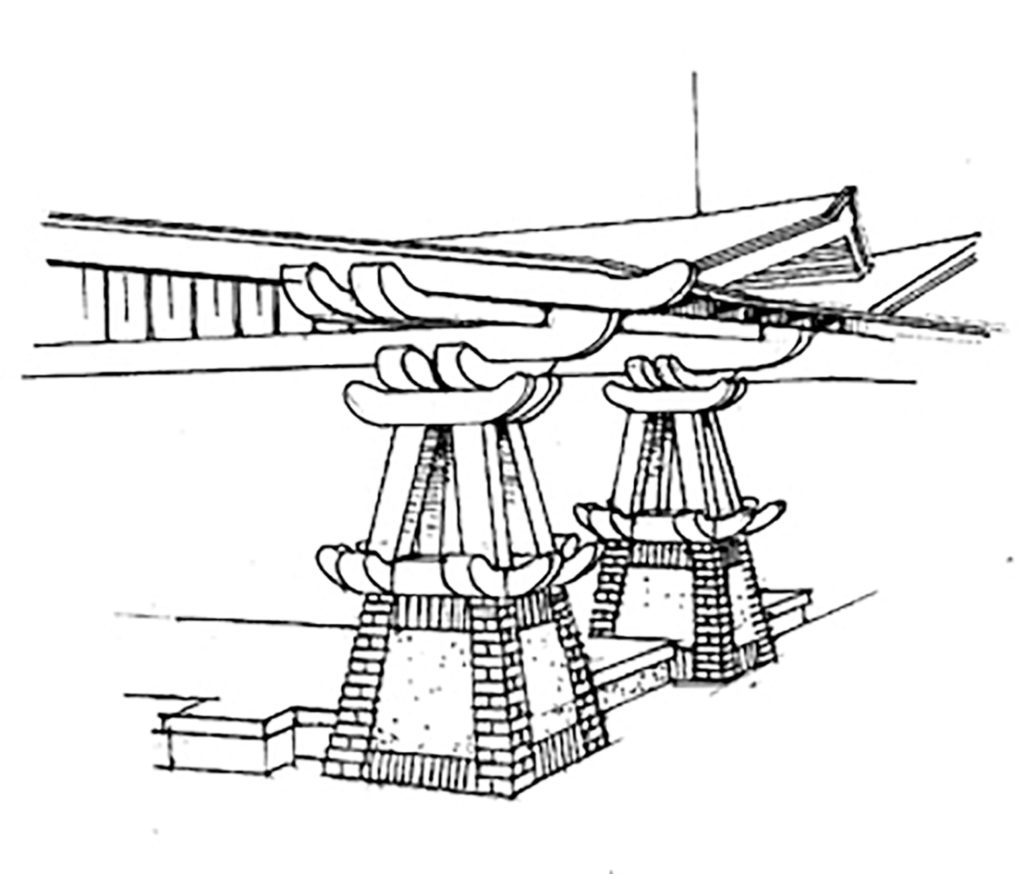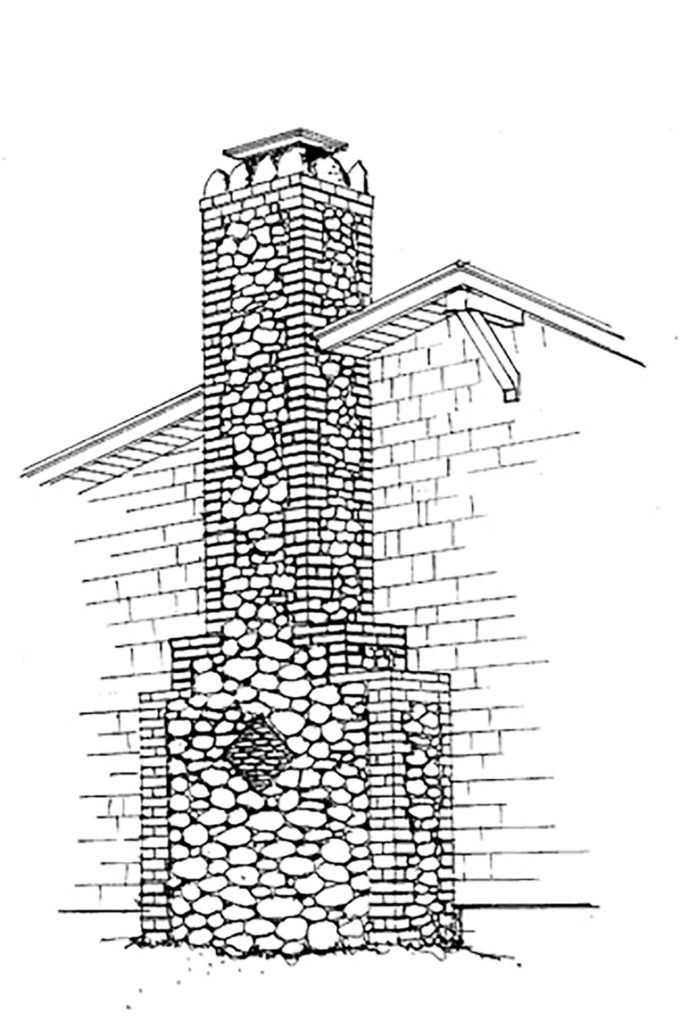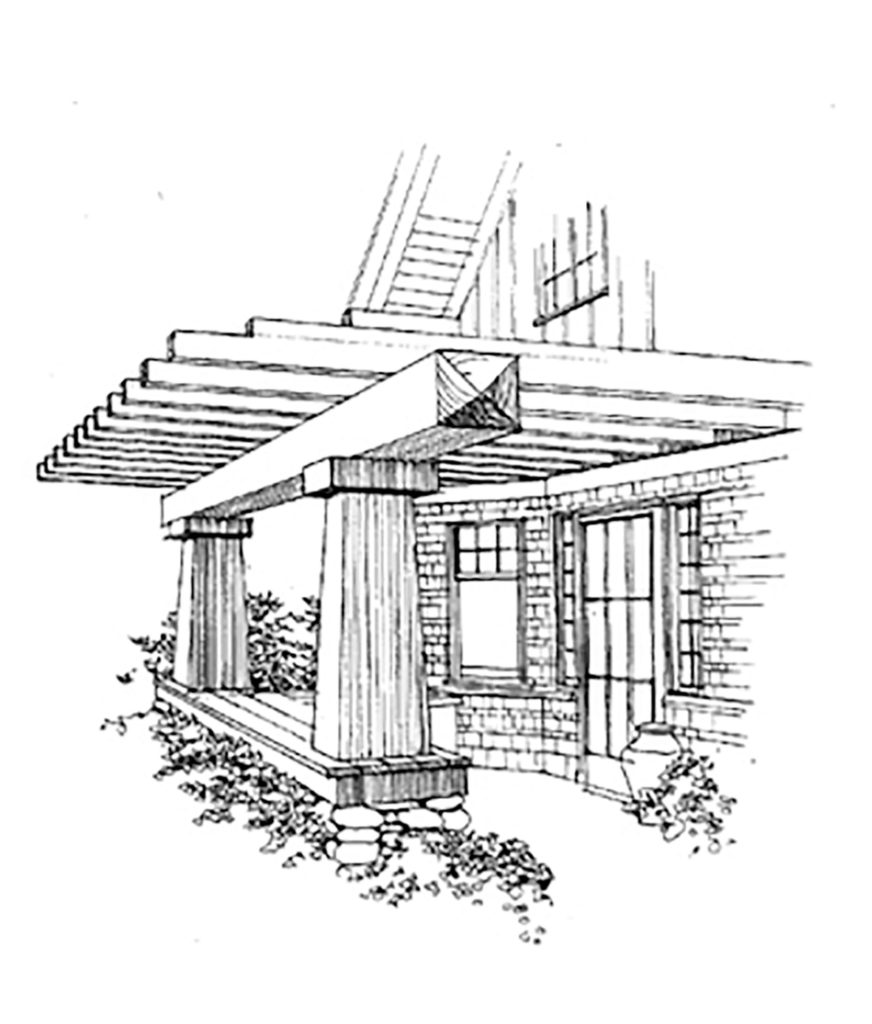Bungalow may seem to some like a synonym for cottage, but in its heyday it was prized both for its exotic, Anglo–Indian associations and for its artistic naturalism. Early in the 20th century, the bungalow had close ties to the Arts & Crafts movement. The bungalow showed up in the U.S. in the 1880s, but it was its development in Southern California that paved the way for its new role as a year-round house.
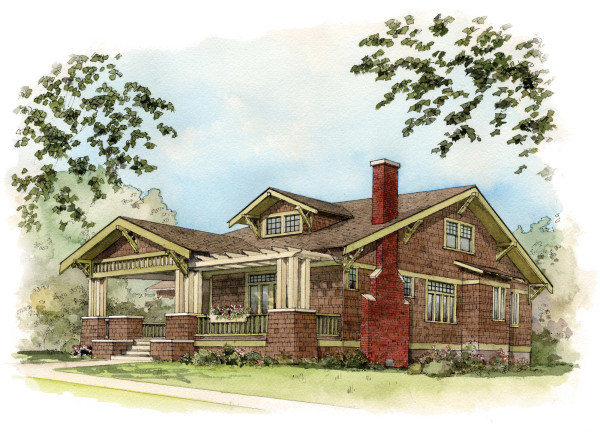
An “artistic bungalow” of the Arts & Crafts era, modeled on an actual planbook model that was available as a kit home. Ground-hugging and with deep eaves, the bungalow promises cozy shelter; the pergola porch blends indoors and out. Exaggerated structure—brackets, battered piers, belt courses—provide the only ornamentation.
Rob Leanna
Bungalows came from India, sort of—variations of the word existed for hundreds of years before any bungalows showed up in England or the U.S. Long, low buildings with wide verandahs and deeply overhanging eaves, “bunguloues” were temporary and quickly erected shelters, built for Englishmen by native labor in India. Around 1870, the builders of newly fashionable vacation houses on the English seacoast referred to them as “bungalows,” giving them an exotic, rough-and-ready image.
But it was in California that the true bungalow boom began. The climate was perfect for a rambling “natural” house with porches and patios. Los Angeles and upscale Pasadena, a resort town in the 1890s, were growing fast. Architects Greene and Greene called their millionaires’ chalets “bungalows.” The California Bungalow —a term in use by 1905—was soon a well-defined new style. Gustav Stickley sang their praises in his magazine The Craftsman. Dozens of plan books between 1909 and 1925 promoted “artistic bungalows.”
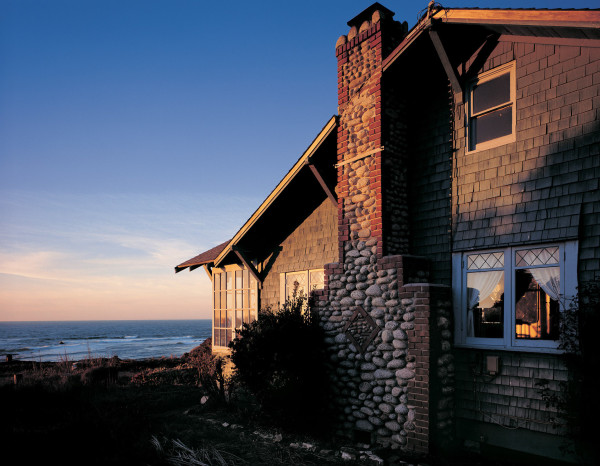
Weathered shingles, an artistic chimney of shore rocks and brick: bungalow in the vernacular.
Douglas Keister
At the same time, home ownership was becoming a realizable American dream for an exploding middle class. A need existed for a small and simple house that would look good even if plainly built and furnished.
As early as 1908, the word with a fashionable cachet was being used for many small houses that had only the vaguest bungalow allusions. Ironically, the 1920s was the boom period for bungalow building, even as the decline of the style began. Instead of “simple, rustic, natural, charming,” the bungalow glut was beginning to change the connotation of the word to “cheap, small, and vulgar.”
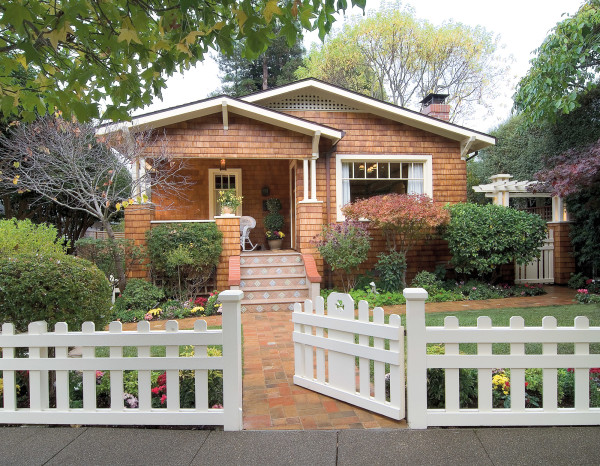
The offset double-gable front is one bungalow type. A short and stout picket fence is perfectly complementary to the house’s height and details.
Douglas Keister
Since the 1980s, the American bungalow has come back stronger than ever as part of the Arts & Crafts Revival. Thousands of bungalows have been snatched up to be interpreted in a manner often beyond the tastes and budgets of the original owners.
The Hallmarks
- one or one and a half storeys Larger houses may have a bungalow-era look, but the definition of a bungalow is one storey, albeit often with a half-storey above.
- low, ground-hugging Most bungalows are low and spreading—with porches, sun porches, pergolas, and patios tying them to the outdoors.
- indigenous materials Find a regional use of such materials as river rock, clinker brick, quarried stone, and shingles.
- emphasis on structure Look for artistic exaggeration in columns, posts, eaves brackets, lintels, and rafters. Inside, too, find ceiling beams, chunky window trim, and wide paneled doors. Horizontal elements are stressed.
- artistic naturalism The Arts & Crafts Bungalow follows an informal aesthetic; it is a type without strong allusions to formal European or classical precedents.
- exotic influences Appearing in builders’ houses and style books: stick ornament in the manner of Swiss Chalets; Spanish or Moorish arches and tilework; and orientalism, especially Japonesque.
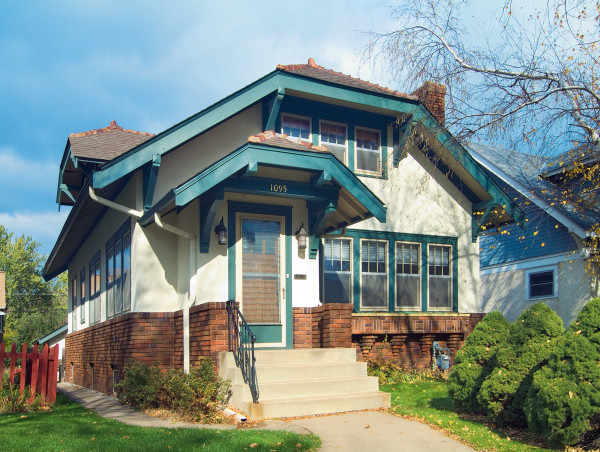
English bungalow.
Douglas Keister
Bungalow Interiors
The typical bungalow interior, at least as it was presented in the house books of the period, is easy to recognize. Basically, the bungalow interior was a Craftsman interior.
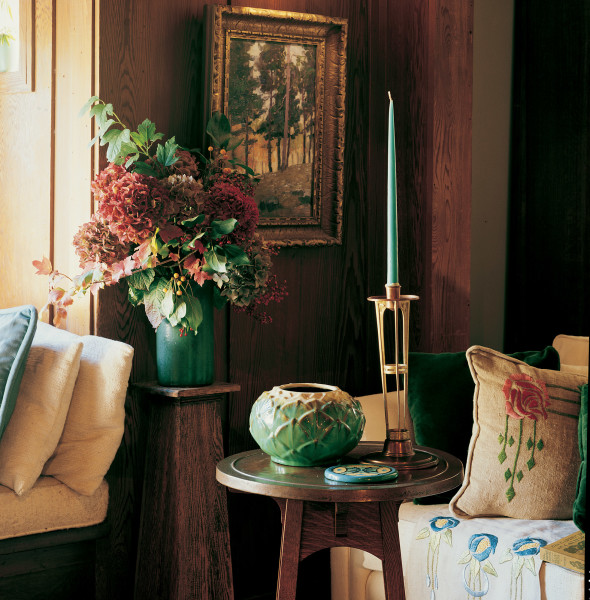
Art, craft, and nature in an Arts & Crafts bungalow.
Rob Gray
- In a departure from Victorian interior decoration, bungalow writers frowned on the display of wealth. Rather than buying objects of obvious or ascribed value, the homeowner was told to look for simplicity and craftsmanship. The finest examples of Arts & Crafts handiwork found a place—but so did rustic furniture.
- Walls were often wood-paneled to chair-rail or plate-rail height. Burlap in soft earth tones was suggested for the wall area above, or used between wainscot battens. Landscape friezes and abstract stenciling were common. Dulled, greyed shades and earth tones, even pastels, were preferred to strong colors. Woodwork could be golden oak or oak brown-stained to simulate old English woodwork, or stained dull black or bronze green. Painted softwood was popular for bedrooms, with white enamel common before 1910 and stronger color gaining popularity during the ’20s.
- It became almost an obsession with bungalow builders to see how many amenities could be crammed into the least amount of space. By 1920, the bungalow had more space-saving built-ins than a yacht: Murphy wall beds, ironing boards in cupboards, built-in mailboxes, telephone nooks.
- Writers advocated the “harmonious use” of furnishings. Oak woodwork demanded oak furniture, supplemented with reed, rattan, wicker, or willow. Mahogany pieces were thought best against woodwork painted in off-white tones.
- Clutter was out—“clutter” being a relative term. Pottery, Indian baskets, oriental wares, vases, and Arts & Crafts hangings satisfied the collector instinct. Affluent households might display Rookwood pottery, small Tiffany pieces, and hammered copper bowls. A watercolor landscape by the amateur painter of the family was the ultimate Arts & Crafts expression for the home.
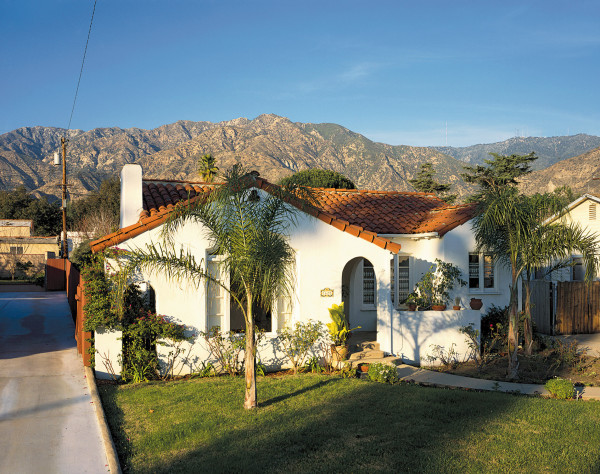
Spanish Mission bungalow.
Douglas Keister
Bungalow Variants
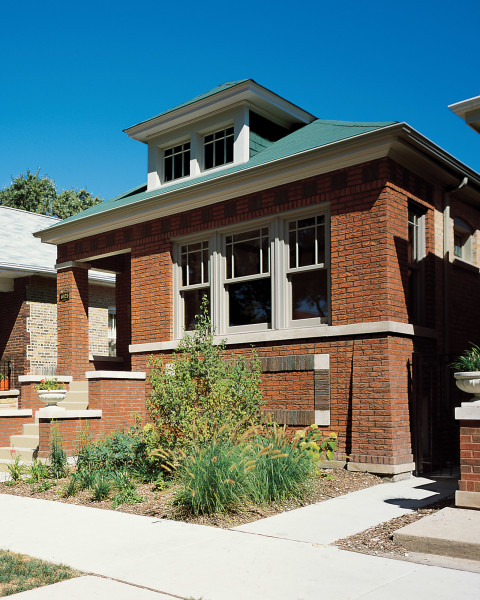
Chicago bungalow.
Douglas Keister
Period bungalows can be quite plain little houses. Some nod to other styles including English Tudor, Swiss Chalet, Japanese—even, anachronistically, Colonial Revival.
- English Bungalow A steeper roof with clipped gables and a parged (stucco) exterior give this house English pedigree.
- Chicago Bungalow A unique brick variant built by the thousands in post-fire Chicagoland.
- Prairie Bungalow This one has nearly flat roofs and Midwestern elements.
- Spanish Mission Bungalow White stucco on lath, a red tile roof, and arcades distinguish this popular sub-type.
Bungalow Books
You’ll find so many books about the American Arts & Crafts movement and
bungalows! For the editor’s list of favorites, go to artsandcraftshomes.com/books



